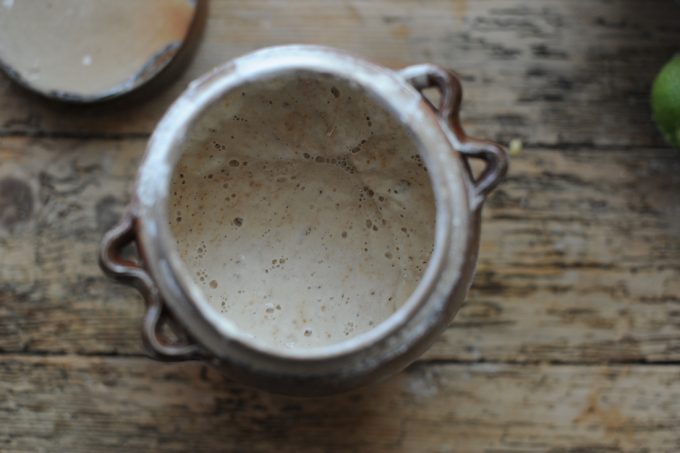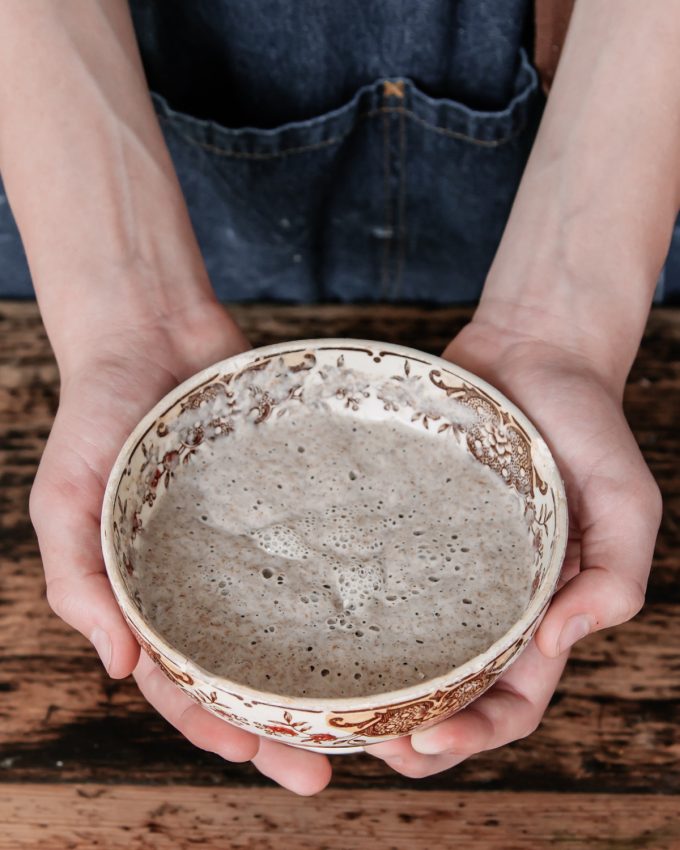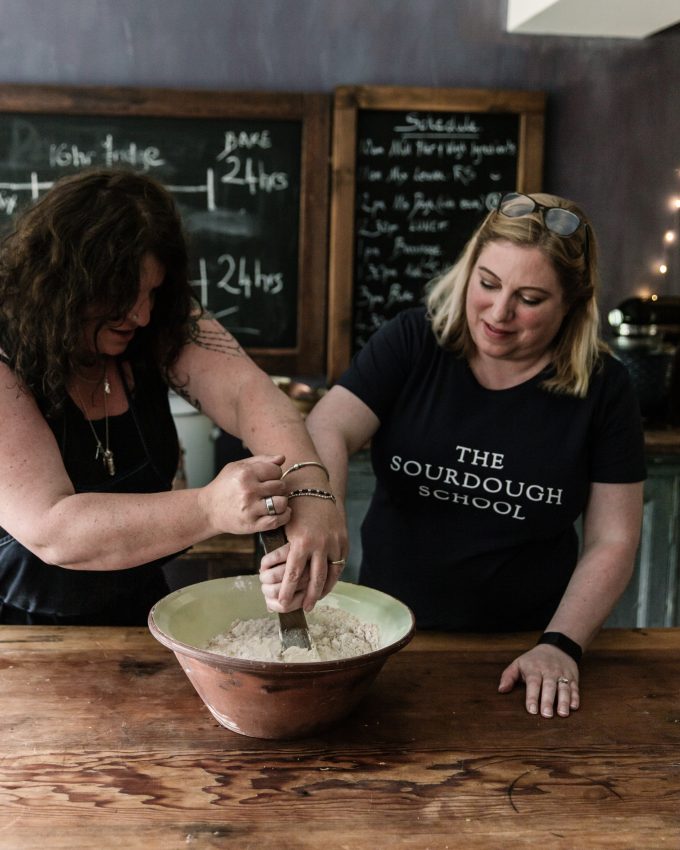Before I even write the word levain – I refer to Leaven as both a leaven and Levain. In the same way as the Bible calls Satan by many different names. Each name has a slightly different meaning. The many other names for Satan give a fuller picture of who Satan is and what he does. But like the devil, the leaven is what it is.. it has the same job no matter what you call it.
The Confusion
A list of terms that are Leavens – but not all are Levains
Sourdough Starter: A fermented mixture of flour and water, containing wild yeasts and lactic acid bacteria.
Some bakers refer to leaven as the preferment, which is a good term, and to be fair the one I sometimes use to refer to something that has other ingredients in, such as pumpkin flesh, or porridge. Perhaps even more confusing are the borrowed terms from other bread baking, such as polish or a biga (which isn’t totally wrong, but I am not here to split hairs). Leaven is also referred to as the “chief”, “chef”, “head”, “mother”, “sponge” or “Massa Madre”. Some bakers simply skip this step out and just use the word starter – which is even more misleading to home bakers. After all, your starter is a starter all the time. Even 6 months old and smelling of cheese, it is still a starter. Is there any wonder there is so much confusion?
Levain: The French term for sourdough starter.
Barm: Historically, the frothy byproduct of fermenting beer, used to leaven bread.Natural Leaven: Refers to leaven made from wild yeasts and bacteria, such as a sourdough starter.
Preferment: A dough or batter prepared prior to the final dough mixing, used to develop flavour and fermentation – can use yeast
Mother Dough: Another term for a sourdough starter or the base from which levain is made.
Chef: In French baking, this term refers to the primary sourdough starter from which levain is prepared.
Bigga: An Italian term for a stiff pre-ferment used in bread making.
Poolish: A French term for a liquid pre-ferment, used to improve the texture and flavour of bread.
Madre: An Italian term for the sourdough starter, particularly in traditional Italian baking.
A levain is made using a Starter



So a key element of your levain being ready is your starer being active.
So an easy way to differentiate is to think of bread making process as generational. The starter is the grandmother. The Levain is the daughter and your bread is the granddaughter. In their own right each can reproduce, but they are essentially different ages.
Why do they need to be different ages? – Well the starter is always starter. It can be 2 weeks old and seriously sour, and this acidity with impede the yeast development and it will have run out of food and it will be dormant if you let it in the fridge. if you just refreshed it then is is a young under developed stater, without the power to reins the bread. So I personally refer to the stages of my starter in terms of dormant, 1st refreshment, 2nd refreshment and then active, and I use the terms bubbly lively, and ready to describe it – so for example ” use an active bubbly lively starter,”
Visually a mature levain in a bowl and an active bubbly starter in a pot. – I like the pot / bowl / dough visual example of grandmother, daughter, granddaughter as it separates the generations.
Old levain Vs new Levain
This is really to do with understanding the degradation of gluten. An old starter or an old levain is acidic, and this triggers the enzymes that break down the protein. It’s your job to develop the gluten and get it strong and robust to capture the CO2 to make the bubbles. Pouring acidity onto your flour while you’re trying to develop the gluten is counterproductive to your network before it’s even begun. To control the acidity and manage the acidity produced by the bacteria at different stages of fermentation, you have to control the age of your levain. That way, you ensure the breakdown occurs at the end of fermentation, and that is how you achieve these amazing structures in place.
So think of your young levain being perfect for the longer retarded sourdough methods – such as the retarded San Francisco retarded method, and the older levain being good for a shorter ambient method, such as the French straight dough technique. There are lottos of choices in between but this is the most dimple way of thinking about the age of the levain/



